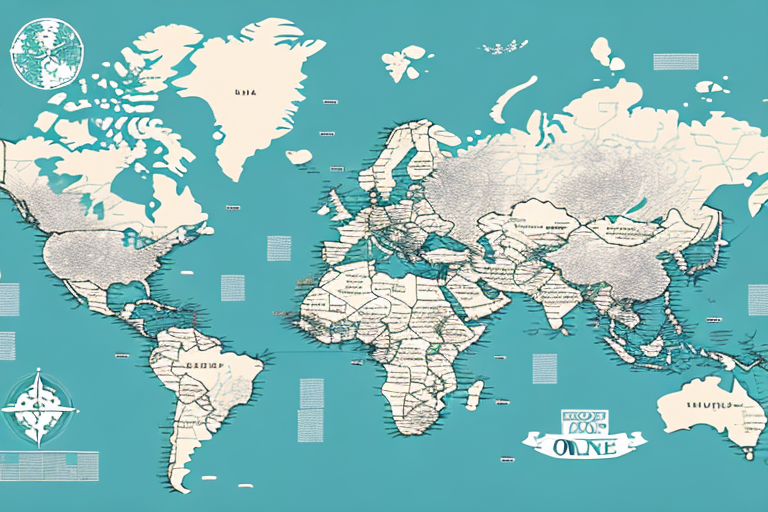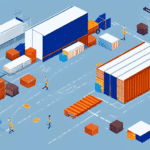Understanding UPS Delivery Zones and Their Impact on Your Shipping
Shipping is an essential part of business, and choosing the right carrier is crucial for timely and cost-efficient deliveries. UPS is one of the most popular shipping providers in the world, offering diverse services to customers across different industries. However, one aspect of UPS shipping that can often cause confusion and frustration is delivery zones. Understanding UPS delivery zones and how they affect your shipping can help you make better shipping decisions, reduce costs, and streamline your supply chain process.
What are UPS Delivery Zones and How Do They Work?
UPS delivery zones are geographical areas that the shipping provider divides based on distance and transit time. Each zone has a specific color code, ranging from brown for the closest locations to white for the farthest ones. The farther the shipping destination from the origin, the more costly the shipping will be. Delivery zones are essential because UPS uses them to determine the transit time, cost, and service levels of each shipment. Each UPS service comes with its own delivery zone map, which you can access online to identify the delivery zone of your shipment.
It's important to note that UPS delivery zones are not fixed and can change depending on various factors, such as weather conditions, traffic, and road closures. This means that even if your shipment was previously in a certain delivery zone, it may be re-routed to a different zone if there are any disruptions in the usual delivery route.
Additionally, UPS offers a service called UPS My Choice, which allows customers to customize their delivery preferences and receive alerts about their shipments. With this service, you can choose to have your package delivered to a different address or held for pickup at a UPS location, which can help you avoid any potential delays or missed deliveries due to being in a different delivery zone.
How UPS Determines Delivery Zones
UPS determines delivery zones based on the distance between the origin and destination, as well as the transit time required to deliver the shipment. UPS uses advanced technology and algorithms to calculate the transit time, taking into account factors such as shipping method, package weight and size, carrier routes, traffic, weather conditions, and more. The transit time estimate is crucial for customers as it allows them to plan their operations, estimate delivery time, and inform their customers accordingly.
In addition to these factors, UPS also considers the type of delivery service requested by the customer. For example, if a customer requests a guaranteed delivery time, UPS will prioritize that shipment over others and allocate resources accordingly. Similarly, if a customer requests a specific delivery window, UPS will work to ensure that the shipment arrives within that timeframe. These additional services may come at an extra cost, but they provide customers with greater flexibility and control over their shipments.
The Importance of Knowing Your Delivery Zone
Knowing your UPS delivery zone is crucial for several reasons:
- Cost Estimation: The cost of shipping is directly proportional to the distance traveled and the transit time.
- Service Selection: Enables you to choose the appropriate shipping service that suits your needs and budget.
- Operational Planning: Helps you plan your shipments more efficiently by understanding transit times and delivery schedules.
- Risk Mitigation: Allows you to anticipate and avoid potential delays or issues with your shipments.
By understanding the transit times and delivery schedules for your zone, you can better coordinate your shipments and ensure that they arrive when you need them to. This can be especially important for businesses that rely on timely deliveries to keep their operations running smoothly.
Finally, being aware of your delivery zone can also help you avoid potential delays or issues with your shipments. If you know that your zone is prone to certain weather conditions or other factors that could impact delivery, you can take steps to mitigate these risks and ensure that your packages arrive on time and in good condition.
How Delivery Zones Affect Shipping Costs
As mentioned earlier, delivery zones are a key factor in determining shipping costs with UPS. The farther the shipping destination, the higher the cost will be. This is because shipping to a distant location requires more fuel and resources, adding to the carrier's expenses. Additionally, different shipping services have different rates for each delivery zone. For example, UPS Ground service charges based on the shipment's weight and zone, while UPS Next Day Air Saver service charges based on the shipment's weight, size, and destination.
Knowing the delivery zone of your shipment can help you estimate the cost and choose the most cost-effective option for your business.
It's important to note that delivery zones can also affect the delivery time of your shipment. If your shipment is going to a remote location, it may take longer to arrive than a shipment going to a nearby location. This is because carriers may have to use multiple modes of transportation, such as trucks, planes, and boats, to reach the destination. Additionally, weather conditions and other unforeseen circumstances can also impact delivery times in certain delivery zones. It's always a good idea to plan ahead and allow for extra time when shipping to a distant location.
Tips for Reducing Shipping Costs with UPS Delivery Zones
- Negotiate Volume Discounts: If you frequently ship large quantities, negotiate with UPS for volume discounts or special pricing.
- Optimize Packaging: Reduce the weight and dimensions of your shipment to lower your shipping costs significantly.
- Choose Cost-Effective Services: Opt for a less expensive shipping service that may take longer but can be more cost-effective.
- Plan Shipping in Advance: Avoid rush or expedited shipping, which may cost more than standard delivery.
Examples of Shipping Scenarios Based on Different Zones
Let's take a look at some examples of shipping scenarios based on different UPS delivery zones. Suppose you are a small business owner based in Los Angeles and need to ship a parcel to New York City. Since New York City is in zone eight, the shipping cost for a UPS Ground service shipment weighing 5 lbs. and measuring 20 x 16 x 8 inches would be approximately $32.50. If you choose a premium service like UPS Next Day Air, the cost would be significantly higher, around $117.50. On the other hand, if you need to ship within California, which is in zone two, the same shipment would cost around $12.50 for UPS Ground and $47.50 for UPS Next Day Air.
Understanding the Differences Between Residential and Commercial Zones
In addition to delivery zones, UPS also differentiates between residential and commercial zones. A residential zone is any location that is primarily used for living purposes, while a commercial zone is any address used mainly for business purposes. Residential zones generally require an additional fee, as delivery to these locations can be more challenging due to limited access, parking restrictions, or other obstacles. Knowing whether your shipment is going to a residential or commercial zone can help you plan ahead and avoid unexpected fees.
How to Determine if Your Address is in a Remote Area Zone
Remote area zones are another type of delivery zone that can incur additional fees for the shipper. These zones are locations that UPS considers to be secluded or difficult to access, such as remote islands, mountainous regions, or rural areas. To determine if your address is in a remote area zone, you can use the UPS zone locator tool on their website or consult with your local UPS representative.
Strategies for Dealing with Remote Area Shipping Fees
If you frequently ship to remote areas, you may want to consider the following strategies to manage additional fees:
- Incorporate Fees into Pricing: Include the additional fees in your pricing strategy to avoid unexpected expenses.
- Negotiate Discounted Rates: Negotiate with UPS for discounted rates for remote area shipping.
- Choose Cost-Effective Services: Select a more cost-effective shipping service that can accommodate remote deliveries.
- Partner with Third-Party Logistics Providers: Work with logistics providers that offer flexible and tailored shipping solutions.
The Impact of COVID-19 on UPS Delivery Zones and Shipping Times
The COVID-19 pandemic has had a significant impact on the shipping industry, causing delays, disruptions, and rising costs across various providers. UPS has been no exception, facing increased demand due to the surge in e-commerce and home deliveries. As a result, UPS delivery zones and shipping times may experience some delays or changes due to lockdowns, transportation restrictions, and supply chain challenges. It is crucial to stay up-to-date with the latest shipping news and adjust your operations accordingly to mitigate any potential risks.
Understanding the Role of Transit Time in UPS Delivery Zones
Transit time is an essential aspect of UPS delivery zones, as it determines how long your shipment will take to reach its destination. UPS transit time is affected by several factors, such as shipping method, the distance traveled, package size and weight, carrier schedules, and more. Knowing the estimated transit time of your shipment can help you plan ahead and ensure timely deliveries. UPS offers different services with varying transit times, such as UPS Ground, Overnight, 3 Day Select, and more, to cater to different shipping needs.
How to Track Your Shipment Across Different Delivery Zones
UPS provides various tools and resources to help customers track their shipments across different delivery zones. You can use the UPS tracking tool on their website, enter your tracking number, and see real-time updates on the status of your shipment. Additionally, you can sign up for UPS My Choice, a free service that allows you to customize your delivery preferences, receive delivery alerts, and reroute your shipment if necessary.
Best Practices for Managing Multiple Shipments Across Different Zones
If you manage multiple shipments across different delivery zones, it can be challenging to keep track of everything and ensure efficient operations. However, there are several best practices you can follow to streamline your shipping process:
- Use Shipping Management Software: Integrate with your e-commerce platform and automate the shipping process.
- Negotiate Discounted Rates: Negotiate with UPS for discounted rates for bulk shipments or use a third-party logistics provider that can offer more competitive rates.
- Optimize Shipment Methods: Use different types of shipment methods for different zones to optimize costs and transit times.
Conclusion: Why Understanding UPS Delivery Zones is Crucial for Effective Shipping Strategies
Understanding UPS delivery zones and how they affect your shipping is crucial for effective shipping strategies. Delivery zones can impact shipping costs, transit times, and service levels, among other factors. By knowing your delivery zone, you can make better shipping decisions, estimate costs accurately, and optimize your shipping to meet your business needs. It is essential to stay up-to-date with the latest shipping trends and adjust your operations accordingly to deliver the best possible experience for your customers.




















